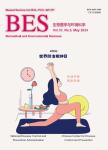Ideal Cardiovascular Health is Inversely Associated with Subclinical Atherosclerosis: A Prospective Analysis
Ideal Cardiovascular Health is Inversely Associated with Subclinical Atherosclerosis: A Prospective Analysis作者机构:National Clinical Research Center for Metabolic DiseasesShanghai Institute of Endocrine and Metabolic Diseasesand Department of Endocrine and Metabolic DiseasesRui-Jin HospitalShanghai Jiao Tong University School of Medicine
出 版 物:《Biomedical and Environmental Sciences》 (生物医学与环境科学(英文版))
年 卷 期:2019年第32卷第4期
页 面:260-271页
核心收录:
学科分类:0710[理学-生物学] 07[理学] 09[农学]
基 金:supported by the grants from National Key R&D Program of China [2016YFC1305600,2017YFC1310700,2016YFC0901200,2016YFC1304904] the National Natural Science Foundation of China the Shanghai Municipal Commission of Health and Family Planning [15GWZK0802] the Three-year Action Plan on Public Health [15GWZK0802] the ‘Gaofeng Gaoyuan Program for Clinical Scientists’ from Shanghai Jiao Tong University School of Medicine supported by the ‘Shanghai Outstanding Academic Leader Program’ supported by the ‘Outstanding Young Talent Program’ from Shanghai Municipal Government
主 题:Cardiovascular health Subclinical atherosclerosis Cohort
摘 要:Objective Ideal cardiovascular health(CVH) could predict a lower risk of developing cardiovascular diseases. This study was conducted to investigate the association between ideal CVH and subclinical atherosclerosis in a population cohort of Chinese adults aged ≥ 40 years. Methods This study was designed as a cross-sectional analysis of 8,395 participants who had complete data at baseline and a prospective analysis of 4,879 participants who had complete data at 4.3 years of follow-up. Ideal CVH metrics were defined according to the American Heart Association. Subclinical atherosclerosis was evaluated by plaques in carotid arteries, carotid intima-media thickness(CIMT), brachial-ankle pulse wave velocity(baPWV), and urinary albumin-to-creatinine ratio(UACR). Results Both the prevalence and incidence of atherosclerosis measures were found to be decreased with increasing numbers of ideal CVH metrics at baseline(all P values for trend 0.01). The levels of CIMT and UACR at follow-up showed an inverse and significant association with the numbers of ideal CVH metrics at baseline(both P values for trend 0.05) but a borderline significant association with baPWV(P for trend = 0.0505). Taking participants with 0-1 ideal metric as reference, we found that participants with 5-6 ideal metrics had significantly lower risks of developing carotid plaques(odds ratio, OR = 0.46; 95% confidence interval, CI 0.27-0.79), increased CIMT(OR = 0.60; 95% CI 0.42-0.84), and increased baPWV(OR = 0.57; 95% CI 0.34-0.97) after full adjustments. A significant interactive effect of age and CVH was detected on CIMT and baPWV progression(both P values for interaction 0.05). Conclusion The numbers of ideal CVH metrics showed a significant and inverse association with the risk of developing subclinical atherosclerosis in middle-aged and elderly Chinese adults, whereas its dose-response effect was attenuated in individuals aged ≥ 60 years and partially weakened in male participants.



